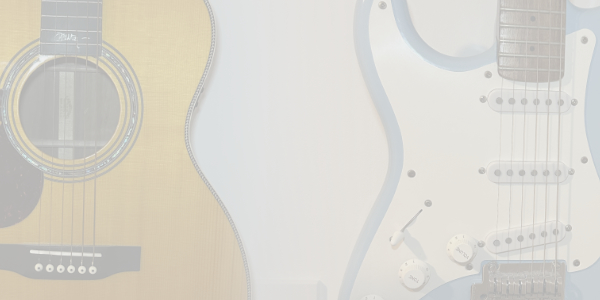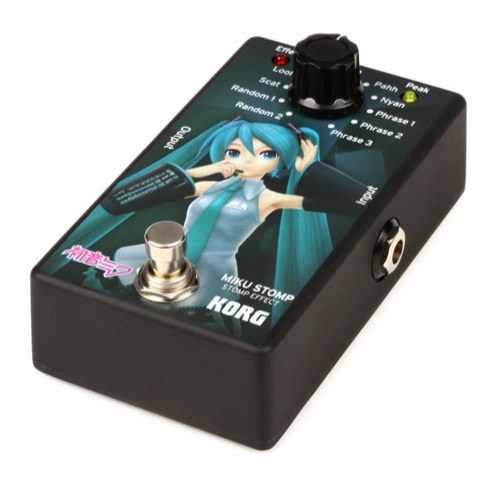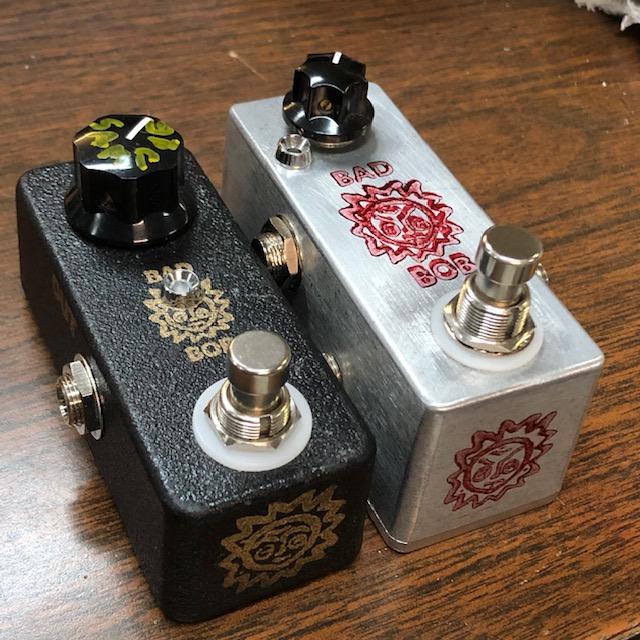
The Rise of Vintage Guitar Pedals – Why Musicians Are Going Retro
Introduction
Vintage gear has been getting a lot of attention lately—both good and bad! Everyone has their own opinion, and there’s no wrong one. However, one of the most popular categories in this trend is Vintage Guitar Pedals. More and more musicians are diving into the world of Vintage Guitar Pedals, but this raises an interesting question: Why are musicians going retro?
Well, we have a few key reasons that might surprise you! It’s not just about “the sound.” Let’s explore why so many guitarists are investing in Vintage Guitar Pedals today.
Historical Significance
There’s no denying that certain pedals are put on a pedestal—and for good reason! We’ve heard their sounds and seen their iconic designs for decades. Pair that with the fact that many of our guitar heroes played them, and suddenly, you have a handful of Vintage Guitar Pedals that are highly sought after and worth insane amounts of money.
Interestingly, pedals don’t even have to be great to become valuable and collectible. However, the ones known for their legendary tone and widespread use by famous players command massive demand—and sky-high prices.
Shall we take a look at some? Let’s start with two of the most famous: the Klon and the Tube Screamer! Can you find hundreds of clones of these pedals from almost every company? Of course! But does that stop the originals from selling for ridiculous prices or millions of guitarists insisting they just sound better? Absolutely not!
Unique Sound Characteristics

Do I think Vintage Guitar Pedals sound better than newer ones? Not really… but sometimes, yes! Right, onto the next point!
A great example of this is the Fuzz Faces we recently reviewed. We compared a Dunlop Fuzz Face and a Dallas-Arbiter Fuzz Face (made roughly 5–10 years apart). On paper, they have the same circuit and technically the same parts. However, even I noticed they sounded hugely different! But the difference isn’t always in the sound—it can be in how they function or respond.
Take the Fuzz Face again as an example. The older model didn’t clean up as nicely as the newer one!
Now, this could be due to a variety of factors—mainly the quality of components, slight variations in parts, or even small circuit tweaks. They might have used pots with slightly different values, or perhaps newer models use different diodes, making them more reliable but altering the tone. A whole manner of things can contribute to a pedal sounding “different.”
I’m not saying an old pedal is better or worse than a new one, but there’s no denying that some Vintage Guitar Pedals just sound different!
Artist Endorsements
This is a big one—artist endorsements! How many of you have bought a pedal just because a guitarist you admire played it? Plenty of players want the exact same Vintage Guitar Pedals their favorite artists used!
Are these people aware they can achieve the same tone with modern pedals? I believe most of them know, but for many, it’s about more than just the sound—it’s the thrill of collecting and the hunt for rare gear!
Just look at Stevie Ray Vaughan—everyone wants his amps, and more importantly, his pedals! Finding a Tube Screamer from that era isn’t just difficult; it’s expensive! The same goes for Jimi Hendrix with his Fuzz Face and Uni-Vibe.
If you’re a huge fan of an artist, chances are you’ll want to own the same Vintage Guitar Pedals they used. And honestly, who can blame you?
"A prime example? The Korg Miku pedal. Originally designed to replicate the voice of a Japanese anime character, it developed a huge fanbase."
Collectibility and Investment
We believe the main reason people collect Vintage Guitar Pedals comes down to investment and collectibility. Most vintage pedals are either extremely rare or highly sought after—sometimes both! This creates high demand and low supply, which naturally drives prices up.
However, it’s important to note that just because a pedal is valuable or in high demand doesn’t mean it sounds great or functions well. Some rare pedals are quirky, impractical, or even plain bad, yet their cult following makes them incredibly popular. When you combine that demand with limited availability, you have the perfect recipe for a highly collectible and expensive pedal.
A prime example? The Korg Miku pedal. Originally designed to replicate the voice of a Japanese anime character, it developed a huge fanbase. On top of that, it was a limited production run. As a result, this pedal, which originally retailed for £180, is now selling for anywhere between £400–£800—despite the fact that almost no one actually uses it!
Should you invest in pedals? Honestly, I don’t think so! Don’t buy pedals with the expectation of making money. While collecting is great, I wouldn’t recommend Vintage Guitar Pedals as a reliable investment. The market is unpredictable, and it’s far from a safe bet!
Nostalgia Factor
We briefly touched on this when we wrote the Vintage Les Paul article (Read Here), but nostalgia plays a huge role in why people chase after Vintage Guitar Pedals. Many musicians develop a deep longing for the gear they had when they were younger—back when they were more naïve about music. We look back on those times with fond memories, and that sentiment alone can make vintage gear desirable.
Even if a pedal doesn’t work perfectly or doesn’t sound all that great, we still want it. And when a whole group of players shares that same nostalgia for a particular pedal, demand goes up—and so does the price!
The longer you play guitar, the more gear you’ll own, sell, and trade. Over time, as your guitar journey continues, you may find yourself longing for the gear you used to own—even if it wasn’t the best!
"Most guitarists will agree—there’s something magical about a cranked Marshall, a Tube Screamer into a Fender!"
Revival of Classic Sounds
Chasing a classic sound? Maybe you’re trying to replicate your favorite guitarist’s tone, or perhaps you’re in a tribute act and need to match a specific sound. If that’s the case, chances are you’ll be searching for the exact gear they used!
When you consider that many classic rock and blues players used similar setups, this naturally leads to high demand for certain Vintage Guitar Pedals. Just think of all the Stevie Ray Vaughan fans who want that cranked Fender amp with a Tube Screamer in front! If you’re trying to sound like your favorite artist, gear is one of the biggest factors in nailing that tone.
It’s also worth noting that guitar tones haven’t changed much since the golden age of rock. Most guitarists will agree—there’s something magical about a cranked Marshall, a Tube Screamer into a Fender, or a Fuzz Face with a touch of Uni-Vibe. It’s been 40–50 years since these tones first defined music history, and yet, we’re still chasing after them today!
DIY and Modding Culture
One thing you’ll notice about guitar pedals—and guitar gear in general—is the huge community dedicated to fixing and modding them! Thousands of players take to forums and websites to showcase their mods and repairs, whether it’s adding new features to a pedal that never had them or reviving a unit that hasn’t worked in decades.
How does this apply to Vintage Guitar Pedals? Older pedals were often hand-wired or built with simpler circuit boards, making them much easier to mod and repair. In contrast, most modern pedals use surface-mount components, which are far more difficult to work with.
So, if someone wants to mod an overdrive pedal, they’re far more likely to choose a vintage overdrive—one that’s easy to disassemble, tweak, and customize to their needs!
Market Trends
What determines the value of Vintage Guitar Pedals? Trends. If a pedal becomes popular for any reason, its price will skyrocket. If it’s rare? The price goes up even more.
Often, all it takes is one influential opinion to spark a surge in demand. Someone makes a statement about a pedal (or any piece of gear), and suddenly, everyone is scrambling to buy it—driving prices through the roof.
Take the JHS Pedals example. When Josh Scott suggested that you didn’t need to spend thousands on a Klon because the affordable DigiTech Bad Monkey could achieve a similar sound, what happened? The Bad Monkey’s price exploded! Sellers were listing them for insane amounts of money overnight. Ironically, many people missed Josh’s actual point, but it perfectly illustrates how the market dictates the price of guitar pedals.
Conclusion
That’s a wrap on our article about Vintage Guitar Pedals! Do any of you own vintage pedals? Do you collect them? Feel free to drop us a message over on Instagram—we’d love to hear about your collection and see some photos!
Should we bring in some vintage gear for review? Maybe give Joe Bonamassa a call and see if he can lend us some of his legendary pedals!
If you’re interested in reading more about vintage guitars, check out our article on the “Vintage” Les Paul—where we talk about a new guitar we recently added to our collection! You can read that article Here.
If you want to support the site then please give us a follow on Instagram and subscribe to our YouTube.
Gigs & Guitars Affiliate Links:
Check out our other Articles here



